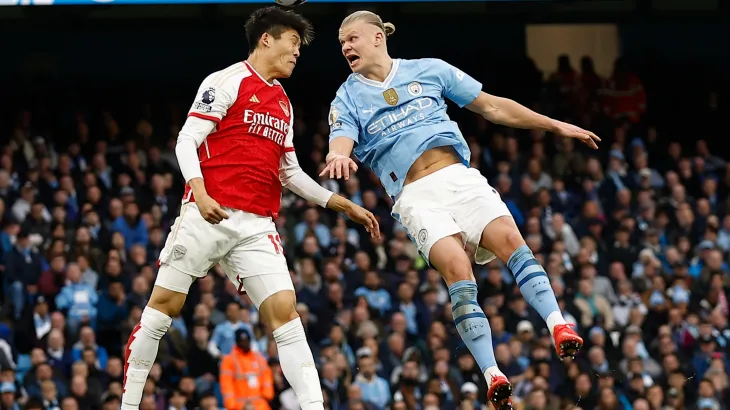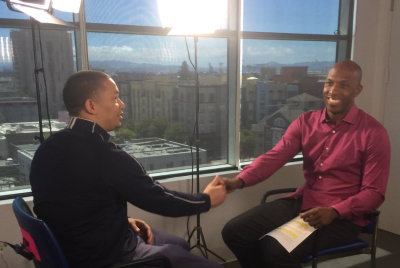Why the Premier League Is the Richest League in the World – And How It Makes Its Money
From billion-pound TV deals to global sponsors and sold-out stadiums, the Premier League's money machine keeps powering ahead of its rivals

Few sporting competitions anywhere on the planet come close to the global pull of the Premier League. The English top flight has become a juggernaut since its formation in 1992, and today it stands as the richest domestic football league in the world by some distance. For fans of the best betting sites, the Premier League generates more interest than any other domestic competition.
From billion-pound TV deals to sold-out stadiums and global commercial partners, the Premier League has created a financial ecosystem that continues to outpace its rivals in Europe and beyond.
So how exactly does the league make its money – and why does it sit so far ahead of La Liga, Serie A, the Bundesliga, or Ligue 1?
Broadcasting Power: The Billion-Pound Engine
The single biggest reason behind the Premier League's financial dominance is television money. The league's media rights are the crown jewels, with domestic and international broadcasters paying staggering sums to secure coverage.
- Domestic deals: Sky Sports, TNT Sports, and the BBC combine to pay billions for live matches and highlights in the UK. The competition between broadcasters ensures the Premier League's rights continue to inflate in value, with the latest domestic deal worth £6.7 billion.
- International deals: The global element is where the league truly breaks away. Rights are sold in more than 200 territories, from the United States to Asia and Africa. NBC Sports in the US and Star Sports in India are just two examples of broadcasters paying handsomely to bring live Premier League action to their markets.
The result? In the 2025–28 cycle, the league expects to generate over £13 billion from TV rights alone. To put that in perspective, the next closest league, Spain's La Liga, earns less than half that figure.
Matchday Revenue: Full Houses Every Week
While television drives the machine, matchday revenue still forms a crucial part of the financial picture.
Premier League clubs consistently play in front of near-capacity crowds. Old Trafford, Anfield, the Emirates, and Tottenham Hotspur Stadium regularly sell out weeks in advance. Even smaller clubs such as Brentford and Bournemouth enjoy strong attendances thanks to the popularity of the competition.
Ticket sales, corporate hospitality, food, drink, and merchandise all flow into club coffers. Collectively, Premier League matchday income now exceeds £700 million annually (approximately $946 million), a figure boosted by the fact that English football has some of the highest average ticket prices in Europe.
Commercial Partnerships: Global Brands, Global Reach
The Premier League has long understood the importance of aligning with global partners. From title sponsors to official betting, airline, and financial services partners, the league and its clubs have mastered the art of commercialisation.
- League-level deals: Companies pay to be associated with the Premier League brand, which is viewed as aspirational, dynamic, and appealing across diverse demographics worldwide.
- Club-level deals: This is where the numbers become astronomical. Manchester United, Liverpool, Chelsea, and Manchester City all boast kit deals worth hundreds of millions with Adidas, Nike, or Puma. Shirt sponsorship agreements with airlines, technology giants, and financial companies provide another vast income stream.
The reach of the league is so strong that even mid-table clubs can strike international partnerships that would dwarf the commercial revenues of top teams in other European leagues.
Globalisation: From Asia to America
A huge factor behind the league's wealth is its global strategy. Summer tours to Asia and the United States aren't just about fitness; they are about selling the brand to new fans and new markets.
Social media has accelerated this trend. Premier League clubs boast hundreds of millions of combined followers across platforms like Instagram, TikTok, and Twitter. That visibility drives shirt sales, boosts international broadcast deals, and creates opportunities for brands to tap into engaged audiences.
Competitive Balance and Entertainment Value
Unlike in some other leagues, where one or two clubs dominate year after year, the Premier League has a reputation for relative unpredictability. Leicester City's title win in 2016 proved that almost anything is possible.
This competitive balance adds value for broadcasters and fans alike. A game between the 10th-placed club and a relegation struggler can still attract global interest because the league maintains a high level of drama throughout the table. That makes the product more marketable and ensures audiences keep tuning in.
Distribution of Wealth
Another reason the Premier League continues to thrive is its relatively balanced distribution model. TV money is shared more evenly than in Spain or Italy, allowing smaller clubs to strengthen their squads and remain competitive on the pitch.
That system not only strengthens the league as a whole but also adds to its global appeal. Matches are rarely foregone conclusions, and international fans see competitive fixtures week after week.
The Premier League is Big, and Only Getting Bigger
The Premier League sits at the summit of world football not just because of the quality on the pitch, but because of a financial model that maximises every possible revenue stream.
- Broadcasting revenue fuels the machine.
- Matchday income and packed stadiums keep the cash flowing.
- Commercial deals and globalisation bring in brands and fans from every corner of the world.
The result is a competition that isn't just the most exciting on the planet, but also the richest. And with demand for live sport showing no signs of slowing, the Premier League looks set to extend its dominance for years to come.
© Copyright IBTimes 2025. All rights reserved.





















